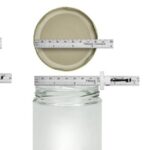
Safety Tips for Burning Candles
As the days get shorter and the mercury drops, more and more people choose candles to bring those cozy vibes of autumn into their homes and work spaces…and then transitioning into the woodsy spruces and all the aromas of the holidays and long winter months. According to the National Candle Association, about 35% of all candle sales occur during the holiday and Christmas season. This means its a great time to be sharing our safety tips for burning candles.
The National Fire Protection Commission says an estimated 8,200 home fires are started by candles each year, and a study by the U.S. Consumer Product Safety Commission suggests that 85% of candle related fires could be avoided if consumers followed 3 very basic practices:
- Never leave a candle burning unattended.
- Never burn a candle on or near anything that might catch fire.
- Keep candles out the the reach of children and of pets.
How to Safely Burn a Candle
Candle safety can begin before you decide which candles to bring into your home! While you can’t always get a complete safety evaluation by looking at a candle, there are certainly some things to look for as you shop.
- Properly centered wick– A properly centered wick is more likely to give you a good melt pool (which is crucial for candle performance). A poorly placed wick can cause uneven heating of the vessel, cause soot build-up on the vessel and may even eventually cause the vessel to crack. This can be an air-quality and fire concern.
- Smooth, pit-free surface – A candle without visible pitting on the surface is more likely to get started without fuss. Excessive pitting can through off the initial burn.
Where to burn your candle:
- Choose a well-ventilated space, but one out of the way of vents, direct air currents & drafts. Air movement will impact how the flame behaves and can cause soot and uneven melting.
- Choose a visible place so that you can monitor the burn, and not forget and leave it unattended.
- Don’t burn candles too close to one another. Containers should be at least 3 inches apart so that the heat from one doesn’t impact the temperature or the rate of melting of another. Each candle also created a draft of it’s own and you don’t want them interfering with neighboring candles.
Before Lighting your Candle:
- Read the manufacturer’s recommendations on proper use and burn time. Burn times and cool times will vary based on the design and components of each specific candle. (See further guidelines below.)
- Trim the wick! Yes! Even if you haven’t burned it yet, the wick should be trimmed to 1/4 inch. A wick trimmer is easier to use than a scissors, especially as your candle burns down into the vessel.
- Use long matches or a long-reach lighter so that you can safely reach just the wick.
While Burning your Candle:
- Never leave it unattended.
- Never burn a candle on or near anything that could catch fire.
- Keep candles out of reach of children and pets, or areas where the activities of people or pets may interfere with the candle.
- Don’t touch or move a burning candle, or while the wax is still liquefied.
- Never burn a candle too long. A good rule of thumb is to outen a candle between the time when the melt pool has completely reached the sides of the vessel and when that melt pool is about 1cm or 1/3 inch deep. Letting it burn past that point can have a negative impact on your wick. You will still get hot throw from the candle as long as the wax is liquefied. Burning it longer doesn’t usually result in better or extended fragrance enjoyment.
- Don’t burn the candle to the bottom of the vessel. The general guideline is to cease burning once there is 1/2 inch of wax remaining in your container. (This is 2 inches for pillar candles.)
- Watch and respond to the flame. If it’s burning too high, or is jumping or flickering, extinguish it, let the wax cool/solidify and trim the wick before lighting again. Sometimes, candles have a wick that burns too hot for the diameter of the container or for the components of the wax & fragrance. If you know your candle maker, this would be valuable feedback. Even though most makers go through rigorous testing, waxes made with natural components do sometimes have some variation in performance.
Additional considerations:
- Never use a candle as a night light, or heat source during a time when you may fall asleep.
- Be cautious when using candles during power outages. Carefully choose stationary locations and do not carry them around. Instead of lighting an excess of candles, consider choosing ones with clear vessels that are more radiant, and take advantage of mirrors and other reflective surfaces to help lighten larger areas.
How to Extinguish a Candle:
- Do not use the lid or cover to extinguish your candle. Use the proper tool – a candle dipper or snuffer to extinguish your candle.
- Be sure that your candle is truly out. Before leaving the area, confirm the absence of embers or glowing.
- Don’t move the candle until the wax has solidified.
Continued Candle Care:
- Keep the wax clean. If wick or carbon flecks fall into your wax, after the wax is no longer hot, use a spoon or wick dipper to gently remove the material. Avoid using sharp object or anything that would scratch your vessel.
- Trim your wick after the wax has completely cooled. If you try to trim it before the wax is solidified, it is more difficult to get the proper length and it is more difficult to retrieve any dropped fragments.





0 Comments